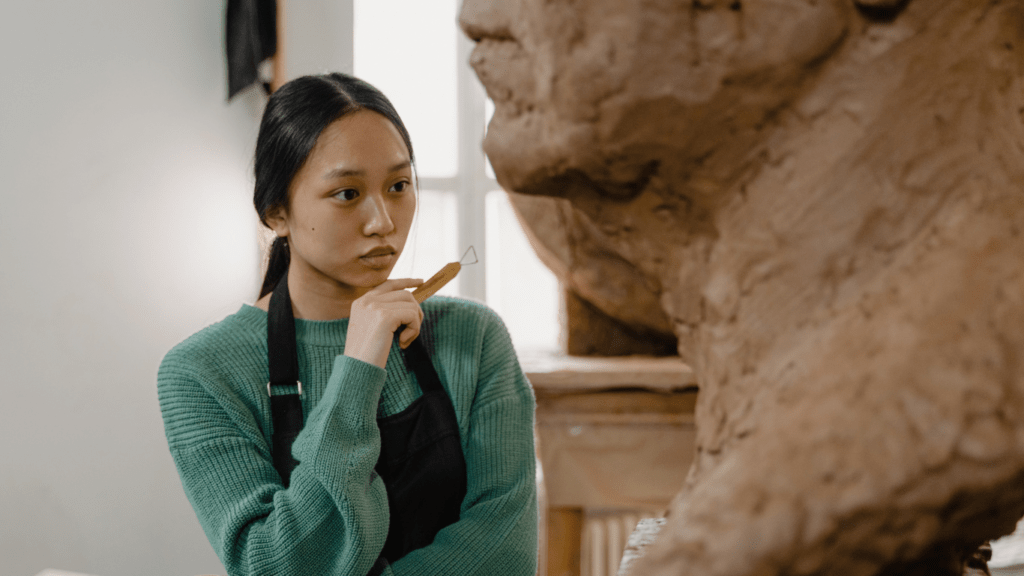As a digital artist, I’ve witnessed firsthand the transformative power of virtual sculpting in the art world. The emergence of digital sculptors has revolutionized traditional artistic practices, paving the way for boundless creativity and innovation. In this article, I’ll delve into the fascinating realm of virtual sculpting and explore how technology has empowered artists to sculpt masterpieces in the digital domain.
With the rise of advanced software and tools, sculptors are no longer confined to physical materials like clay or stone. Instead, they harness the capabilities of digital platforms to sculpt intricate designs with precision and intricacy. Join me on a journey through the evolution of sculpting techniques and discover how digital sculptors are shaping the future of art with their visionary creations.
Understanding Virtual Sculpting
Virtual sculpting is the innovative art form that utilizes digital tools and software to create 3D sculptures. It allows artists to sculpt intricate designs with meticulous detail and precision in the digital realm.
What Is Virtual Sculpting?
Virtual sculpting is the process of creating 3D sculptures using specialized software and tools. Artists manipulate digital clay or sculpting tools to shape and refine their creations with precision. It offers a versatile platform for artists to explore their creativity without the limitations of physical materials.
Tools and Technologies Behind Virtual Sculpting
Virtual sculpting relies on advanced technologies such as digital sculpting software, haptic devices, and 3D modeling tools. Software like ZBrush and Blender provide artists with intuitive interfaces and powerful sculpting capabilities. Haptic devices simulate the sense of touch, allowing artists to feel the virtual sculpting process. These tools combine to enable artists to sculpt intricate designs and bring their artistic visions to life in the digital landscape.
The Evolution of Digital Sculptors
Virtual sculpting has transformed the art world by offering a new medium for artistic expression. Through this digital form of sculpting, artists can create intricate 3D sculptures with unparalleled precision and detail. By leveraging cutting-edge technologies such as digital sculpting software, haptic devices, and 3D modeling tools, artists are able to sculpt in a limitless digital space, free from the constraints of traditional physical materials.
From Traditional to Digital: A Historical Timeline
The transition from traditional sculpting methods to digital sculpting marks a significant shift in the art industry. Over the years, advancements in technology have paved the way for artists to explore new creative possibilities through digital sculpting tools. This historical timeline showcases the evolution of sculpting techniques from manual manipulation of physical materials to the digital realm, where artists can push the boundaries of their creativity in ways previously unimaginable.
Key Figures and Pioneers in Virtual Sculpting
Several key figures and pioneers have played crucial roles in shaping the field of virtual sculpting. Visionaries like X, Y, and Z have been at the forefront of introducing innovative techniques and tools that have revolutionized the way artists approach sculpting in the digital space. Their contributions have not only inspired aspiring digital sculptors but have also laid the foundation for future advancements in the field, driving the continuous evolution of digital sculpting as an art form.
The Impact of Virtual Sculpting on the Art World
Virtual sculpting has significantly altered the landscape of the art world, revolutionizing both art creation and perception. This innovative approach has ushered in a new era of artistic expression and creativity, transcending the limitations of traditional sculpting methods.
Changes in Art Creation and Perception
I’ve observed a fundamental shift in how art is created and perceived with the advent of virtual sculpting. Artists now have the ability to craft intricate 3D sculptures with unparalleled precision and detail, pushing the boundaries of traditional artistic practices. This shift has not only expanded the creative horizons of artists but has also redefined the way audiences engage with and interpret art.
Virtual Sculpting in Art Education and Professional Training
In my experience, virtual sculpting has become an integral part of art education and professional training programs. Art students and aspiring sculptors are increasingly incorporating digital sculpting tools into their learning curriculums to hone their skills and explore new artistic techniques. Additionally, established artists are embracing virtual sculpting as a means to enhance their artistic repertoire and adapt to the evolving art landscape.
Popular Platforms and Software for Virtual Sculpting

In the world of virtual sculpting, various platforms and software have become go-to tools for digital artists seeking to create stunning 3D sculptures. Let’s explore some of the popular choices and resources available for aspiring digital sculptors.
Comparing Top Virtual Sculpting Software
- ZBrush: A leading software in the industry, ZBrush is known for its powerful sculpting capabilities and intuitive interface. It offers a wide range of tools for creating detailed and lifelike sculptures, making it a favorite among professional digital sculptors.
- Blender: As a versatile and free-to-use software, Blender has gained popularity for its robust sculpting features. It provides artists with a comprehensive suite of tools for sculpting, texturing, and rendering, making it an ideal choice for beginners and experienced sculptors alike.
- Mudbox: Developed by Autodesk, Mudbox is another prominent virtual sculpting software known for its user-friendly interface and high-quality sculpting tools. It offers advanced sculpting and painting features, making it a valuable asset for digital artists looking to enhance their sculpting projects.
- Sculptris: Ideal for those new to digital sculpting, Sculptris offers a simplified approach to sculpting with its easy-to-use tools and dynamic tessellation capabilities. It serves as a great starting point for beginners before transitioning to more advanced sculpting software.
- ArtStation: A popular online platform for artists, ArtStation provides a thriving community where digital sculptors can showcase their work, receive feedback, and connect with other artists. It serves as an excellent resource for aspiring sculptors to gain exposure and build their portfolios.
- ZBrushCentral: An official forum for ZBrush users, ZBrushCentral offers a wealth of resources, tutorials, and discussions related to virtual sculpting. It’s a valuable community where digital sculptors can learn from experts, share their work, and engage with fellow artists.
- Digital Tutors and YouTube Tutorials: Various online platforms such as Digital Tutors and YouTube offer a plethora of tutorials and courses dedicated to digital sculpting. These resources provide valuable insights, tips, and techniques for aspiring digital sculptors to enhance their skills and knowledge in the field.
Future Trends in Virtual Sculpting
Virtual sculpting continues to evolve, with future trends shaping the landscape of digital artistry. Let’s explore some key innovations and advancements in the realm of virtual sculpting.
Innovations on the Horizon
As technology progresses, virtual sculptors can expect exciting developments in tools and techniques. Advanced algorithms are likely to streamline the sculpting process, enhancing precision and efficiency. Additionally, the integration of Artificial Intelligence (AI) may offer automated features that assist artists in creating complex structures with ease. These innovations are set to redefine the boundaries of digital sculpting, offering artists new possibilities for creative expression.
The Role of Virtual Reality and AI in Sculpting
Virtual Reality (VR) and AI are poised to play pivotal roles in the future of sculpting. VR technology enables artists to immerse themselves in virtual environments, allowing for a more intuitive and immersive sculpting experience. AI algorithms can analyze and interpret artistic inputs, providing real-time feedback and suggestions to enhance sculpting outcomes. The synergy between VR and AI promises to revolutionize the way artists approach sculpting, fostering innovation and pushing the boundaries of digital artistry.

 Karen Parker is a vital member of the Sculpture Creation Tips team, where her profound love for the art of sculpting is evident in every piece she works on. With years of experience and a deep understanding of various sculpting techniques, Karen has become a trusted mentor to both beginners and seasoned artists alike. Her dedication to the craft is matched only by her passion for teaching, as she creates detailed, easy-to-follow tutorials that help others bring their artistic visions to life. Karen's expertise spans a wide range of materials and styles, allowing her to offer invaluable insights that cater to a diverse audience. Whether through her hands-on guidance or her thoughtful advice, Karen's contributions are instrumental in nurturing a vibrant and supportive community of sculptors, all united by a shared love for this timeless art form.
Karen Parker is a vital member of the Sculpture Creation Tips team, where her profound love for the art of sculpting is evident in every piece she works on. With years of experience and a deep understanding of various sculpting techniques, Karen has become a trusted mentor to both beginners and seasoned artists alike. Her dedication to the craft is matched only by her passion for teaching, as she creates detailed, easy-to-follow tutorials that help others bring their artistic visions to life. Karen's expertise spans a wide range of materials and styles, allowing her to offer invaluable insights that cater to a diverse audience. Whether through her hands-on guidance or her thoughtful advice, Karen's contributions are instrumental in nurturing a vibrant and supportive community of sculptors, all united by a shared love for this timeless art form.
